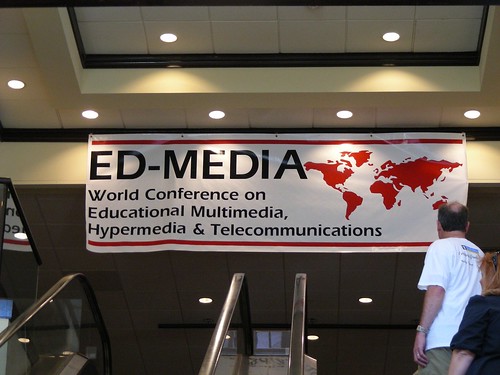 As part of CPSquare’s “Connected Futures” workshop exploring the use of web technologies in the service of communities of practice, we (John Smith and I!) asked Howard Rheingold to share a little bit about the Social Media Classroom (SMC) he developed as part of a MacArthur Foundation Award (A HASTAC award specifically).
As part of CPSquare’s “Connected Futures” workshop exploring the use of web technologies in the service of communities of practice, we (John Smith and I!) asked Howard Rheingold to share a little bit about the Social Media Classroom (SMC) he developed as part of a MacArthur Foundation Award (A HASTAC award specifically).
We were interested to hear about the development both because we are using a hosted version of the SMC as our “home base” this iteration of the workshop, and because Howard’s project is a nice example of community technology stewardship. Every platform has its lineage, the experiences of the designers that inform design choices during development. What needs is it trying to meet? How can it do this in the simplest and elegant manner?
SMC is created on a Drupal base but customized to reflect what Howard thought would be useful for educators. But it is not just a technology platform. There is also a rich library of new media literacy resources and a community of practitioners. From the SMC website:
The Social Media Classroom (we’ll call it SMC) includes a free and open-source (Drupal-based) web service that provides teachers and learners with an integrated set of social media that each course can use for its own purposes—integrated forum, blog, comment, wiki, chat, social bookmarking, RSS, microblogging, widgets , and video commenting are the first set of tools. The Classroom also includes curricular material: syllabi, lesson plans, resource repositories, screencasts and videos.
For communities picking or even building platforms for themselves, there are some nice pearls from Howard.
Click here to listen in: 30 Minutes with Howard Rheingold on the Social Media Classroom… and other stuff!
Some of the things Howard talked about included:
- the importance of an on-ramp to new media – with integration of tools being an important early experience that helps us be more confident when we start using tools in a more “free range” manner.
- the need for a new media literacy – just because we are all online doesn’t mean we understand and know how to use it. What are the essentials that make a difference?
- the origins and inspirations of some of the tools in the SMC
- Howard’s exploration of teaching at this phase in his career and the importance of a constructivist, participatory approach.
If you are interested in SMC for your learning context, you can download the software to your server, or if you don’t have access to a server or IT help, the project is offering a limited amount of hosted space. If you want to learn more and engage in the SMC c ommunity, join the community of practice.
Photo credit:vagawi
 Ostensibly, a conference – Ed-Media– brought me to Hawaii, but my blogging quietude is more about some vacation time. (Pictures slowly arriving on Flickr).
Ostensibly, a conference – Ed-Media– brought me to Hawaii, but my blogging quietude is more about some vacation time. (Pictures slowly arriving on Flickr).![Reblog this post [with Zemanta]](https://img.zemanta.com/reblog_e.png?x-id=045e0ba9-1106-4075-9115-7a433a9f2255)
 I was going to say “online community management” in the title, because I know that is a hot search term, but I just could not do it. What Simon Hearn of the
I was going to say “online community management” in the title, because I know that is a hot search term, but I just could not do it. What Simon Hearn of the  As part of
As part of  Now that we are a couple of months into the “signal sharing” of the
Now that we are a couple of months into the “signal sharing” of the